| First Industrial Revolution Outline |
| www.studenthandouts.com > World History > Industrial Revolution > Industrial Revolution Outlines & PPTs |
|
I. Historical significance of the Industrial Revolution a. An ancient Greek or Roman would have been just as comfortable in Europe in 1700 because daily life was not much different—agriculture and technology were not much changed in 2000+ years b. The Industrial Revolution changed human life drastically c. More was created in the last 250+ years than in the previous 2500+ years of known human history 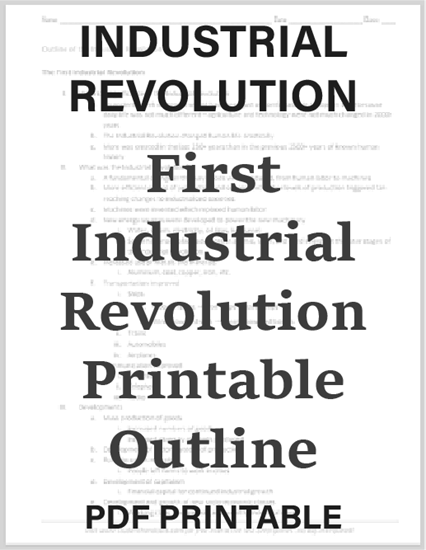 II. What was the Industrial Revolution?
II. What was the Industrial Revolution?a. A fundamental change in the way goods were produced, from human labor to machines b. More efficient means of production and subsequent higher levels of production triggered far-reaching changes to industrialized societies c. Machines were invented which replaced human labor d. New energy sources were developed to power the new machinery i. Water, steam, electricity, oil (gas, kerosene) ii. Some historians place advances in atomic, solar, and wind energy at the later stages of the Industrial Revolution e. Increased use of metals and minerals i. Aluminum, coal, copper, iron, etc. f. Transportation improved i. Ships 1. Wooden ships → iron ships → steel ships 2. Wind-powered sails → Steam-powered boilers ii. Trains iii. Automobiles iv. Airplanes g. Communication improved i. Telegraph ii. Telephone iii. Radio III. Developments a. Mass production of goods i. Increased numbers of goods ii. Increased diversity of goods produced b. Development of factory system of production c. Rural-to-urban migration i. People left farms to work in cities d. Development of capitalism i. Financial capital for continued industrial growth e. Development and growth of new socio-economic classes i. Working class, bourgeoisie, and wealthy industrial class f. Commitment to research and development i. Investments in new technologies ii. Industrial and governmental interest in promoting invention, the sciences, and overall industrial growth IV. Background of the Industrial Revolution a. Scientific Revolution i. 17th and 18th centuries ii. Discoveries of Boyle, Lavoisier, Newton, etc. iii. Abstract research led to practical applications b. Intellectual Revolution (Enlightenment) i. 17th and 18th centuries ii. Writings of Locke, Voltaire, etc. iii. Interest in progress and better lives for people c. Atmosphere of discovery and free intellectual inquiry i. Greater knowledge of the world ii. Weakened superstition and tradition iii. Encouraged learning and the search for better and newer ways of doing things V. Development of the domestic system of production a. Domestic system developed in England b. Late 1600s-late 1800s c. Domestic system of production = "putting out" system i. Businesspeople delivered raw materials to workers’ homes ii. Workers manufactured goods from these raw materials in their own homes (typically articles of clothing) iii. Businesspeople picked up finished goods and paid workers wages based on number of items d. Domestic system could not keep up with demand e. What was it like? Example=dressmakers i. For consumers 1. Items were made to order so you’d have fewer things that cost a lot 2. No going into a store and grabbing your size shirt off the rack 3. Go to a store → select fabric → pick a pattern → get measured → wait a week or so to get your item ii. For workers 1. Work from home A. Your home is your workspace B. You own the tools you work with 2. Sporadic work A. You'd be busy during special occasions (weddings, parties, holidays, balls) but could go days and even weeks without work VI. Factory system a. Developed to replace the domestic system of production b. Faster method of production c. Workers concentrated in a set location d. Production anticipated demand e. What was it like? i. For consumers 1. You get to grab your size shirt off the store rack 2. Store owners kept numerous dresses, etc., in stock in a number of popular patterns and sizes, anticipating that women would buy them 3. Clothes were cheaper, and you saw more variety/options in a store, so you bought more ii. For workers 1. More steady work 2. No longer worked from home, but in a clothing factory 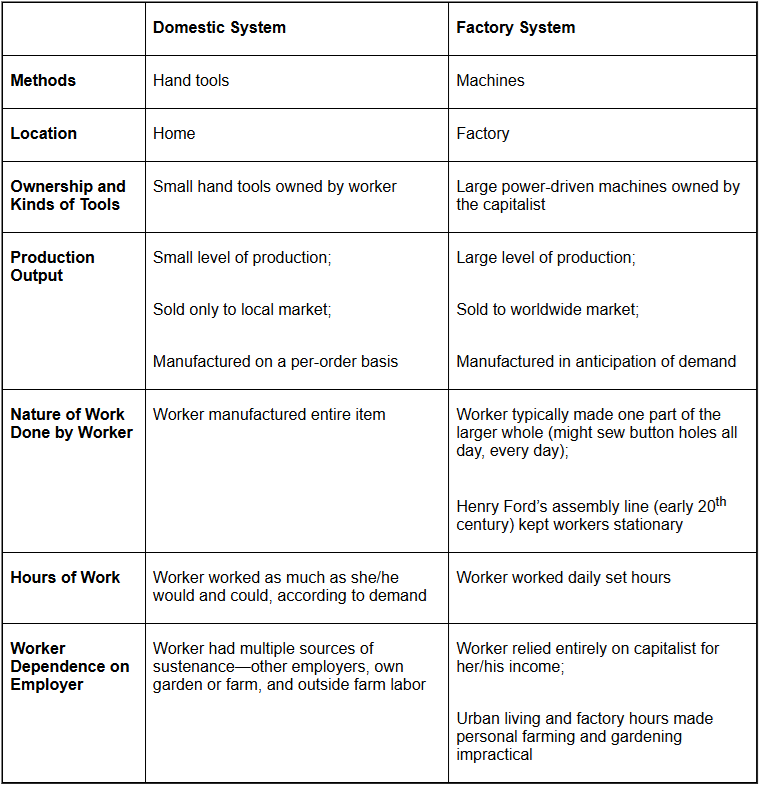 VII. England—birthplace of the Industrial Revolution a. No concrete start date for the Industrial Revolution b. Marked by gradual, slow changes c. After 1750—these changes were noticeable first in England VIII. Why the Industrial Revolution started in England a. Capital for investing in the means of production b. Colonies and markets for manufactured goods c. Raw materials for production d. Workers e. Merchant marine f. Geography IX. England's resources—capital a. The Commercial Revolution made many English merchants very wealthy b. These merchants had the capital to invest in the factory system—money to buy buildings, machinery, and raw materials X. England's resources—colonies and markets a. Wealth from the Commercial Revolution spread beyond the merchant class b. England had more colonies than any other nation c. Its colonies gave England access to enormous markets and vast amounts of raw materials d. Colonies had rich textile industries for centuries i. Many of the natural cloths popular today, such as calico and gingham, were originally created in India ii. China had a silk industry XI. England's resources—merchant marine a. World's largest merchant fleet b. Merchant marine built up from the Commercial Revolution c. Vast numbers of ships could bring raw materials and finished goods to and from England's colonies and possessions, as well as to and from other countries XII. England's resources—geography a. England is the political center of Great Britain, an island b. Great Britain (as the entire island was called beginning in 1707) did not suffer fighting on its land during the wars of the 18th century c. Island has excellent harbors and ports d. Damp climate benefited the textile industry (thread did not dry out) e. Government stable f. No internal trade barriers XIII. "Necessity is the mother of invention" a. Spinning machine → need to speed up weaving → power loom created → increased demand for raw cotton → invention of the cotton gin → demands for stronger iron → improvements in iron smelting and the development of economically-feasible steel (Bessemer process) b. As more steam-powered machines were built, factories needed more coal to create this steam → mining methods improved to meet the demand for more coal c. The process of inventing never ends i. One invention inevitably leads to improvements upon it and to more inventions XIV. The textile industry a. Textiles—cloths or fabrics b. First industry to be industrialized c. Great Britain learned a lot about textiles from India and China XV. Birth and growth of the textile industry a. John Kay (English) i. Flying shuttle, 1733 ii. Hand-operated machine which increased the speed of weaving b. James Hargreaves (English) i. Spinning jenny, 1765 ii. Home-based machine that spun thread 8 times faster than when spun by hand c. Richard Arkwright (English) i. Water frame, 1769 ii. Water-powered spinning machine that was too large for use in a home—led to the creation of factories d. Samuel Crompton (English) i. Spinning mule, 1779 ii. Combined the spinning jenny and the water frame into a single device, increasing the production of fine thread e. Edward Cartwright (English) i. Power loom, 1785 ii. Water-powered device that automatically and quickly wove thread into cloth f. Eli Whitney (American) i. Cotton gin, 1793 ii. Device separated raw cotton from cotton seeds, increasing the cotton supply while lowering the cost of raw cotton g. Elias Howe (American) i. Sewing machine, 1846 ii. Speed of sewing greatly increased XVI. Development of steam engines a. Early water power involved mills built over fast-moving streams and rivers b. Early water power had problems i. Not enough rivers to provide the power needed to meet growing demand ii. Rivers and streams might be far removed from raw materials, workers, and markets iii. Rivers are prone to flooding and drying c. Steam power i. Humans tried harnessing steam power for millennia 1. Hero of Alexandria, Egypt—created a steam-driven device in the 1st century BCE ii. Thomas Newcomen, England (1704) 1. Created a steam engine to pump water from mines iii. James Watt, Scotland (1769) 1. Improved Newcomen’s engine to power machinery d. Steam engines i. By 1800, steam engines were replacing water wheels as sources of power for factories ii. Factories relocated near raw materials, workers, and ports iii. Cities grew around the factories built near central England’s coal and iron mines 1. Manchester; Liverpool XVII. Coal and iron a. Vast amounts of fuel were required to smelt iron ore to burn out impurities b. Abraham Darby (1709) i. Discovered that heating coal turned it into more efficient coke c. John Smeaton (1760) i. Smelted iron by using water-powered air pumps to create stem blasts d. Henry Cort (1783) i. Developed the puddling process which purified and strengthened molten iron e. Increases in coal and iron production, 1770-1800 i. Coal production doubled → from 6,000,000 to 12,000,000 tons ii. Pig iron production increased 250% 1. 1800—130,000 tons iii. Great Britain produced as much coal and iron as every other country combined XVIII. Bessemer process and steel a. Prior to the Industrial Revolution, steel was difficult to produce and expensive b. Henry Bessemer, 1856 i. Developed the Bessemer process ii. Brought on the "Age of Steel" iii. Steel is the most important metal used over the past 150+ years c. Other improvements in steel production i. Open-hearth furnace ii. Electric furnace iii. Use of other metals to produce various types of steel XIX. Transportation a. Increased production → Search for more markets and raw materials → better and faster means of transportation b. Before the Industrial Revolution i. Canal barges pulled by mules ii. Ships powered by sails iii. Horse-drawn wagons, carts, and carriages c. After the Industrial Revolution i. Trains ii. Steamships iii. Trolleys iv. Automobiles d. Transportation revolution i. Robert Fulton (American) 1. Steamboat (1807) 2. Sped water transportation ii. Thomas Telford and John McAdam (British) 1. Macadamized roads (1810-1830) 2. Improved road travel iii. George Stephenson (English) 1. Locomotive (1825) 2. Fast land transport of people and goods iv. Gottlieb Daimler (German) 1. Gasoline engine (1885) 2. Led to the invention of the automobile v. Rudolf Diesel (German) 1. Diesel engine (1892) 2. Cheaper fuel vi. Orville and Wilbur Wright (American) 1. Airplane (1903) 2. Air transport e. Steamboats i. Robert Fulton invented the steamboat in 1807 ii. The Clermont operated the first regular steamboat route, running between Albany and New York City iii. 1819—the Savannah used a steam engine as auxiliary power for the first time when it sailed across the Atlantic Ocean iv. 1836—John Ericsson invented a screw propeller to replace paddle wheels v. 1838—the Great Western was the first ship to sail across the Atlantic on steam power alone, completing the trip in 15 days f. Macadamized roads i. Strong, hard roads invented by Thomas Telford and John McAdam ii. Improvement over dirt and gravel roads iii. Macadamized roads have a smooth, hard surface that supports heavy loads without requiring a thick roadbed iv. Modern roads are macadamized roads, with tar added to limit the creation of dust g. Railroads i. 1830—Stephenson's "Rocket" train traveled the 40 miles between Liverpool and Manchester in 1½ hours ii. 1830-1870—railroad tracks went from 49 miles to over 15,000 miles iii. Steel rails replaced iron rails iv. 1869—Westinghouse's air brake made train travel faster v. Greater train traveling comfort—heavier train cars, improved road beds, and sleeping cars XX. Communications revolution a. Samuel F.B. Morse (American) i. Telegraph (1844) ii. Rapid communication across continents b. Alexander Graham Bell (American) i. Telephone (1876) ii. Human speech heard across continents c. Cyrus W. Field (American) i. Atlantic cable (1866) ii. United States and Europe connected by cable d. Guglielmo Marconi (Italian) i. Wireless telegraph, an early form of the radio (1895) ii. No wires needed for sending messages e. Lee de Forest (American) i. Radio tube (1907) ii. Radio broadcasts could be sent around the world f. Vladimir Zworykin (American) i. Television (1925) ii. Simultaneous audio and visual broadcast XXI. Printing revolution a. Printing—1800-1830 i. Iron printing press ii. Steam-driven press b. Rotary press—1870 i. Invented by Richard Hoe ii. Printed both sides of a page at once c. Linotype machine—1884 i. Invented by Ottmar Mergenthaler ii. A machine operator could create a "line of type" all at one go, rather than having to individually set each letter d. Newspapers became much cheaper to produce i. Cost of newspaper plummeted ii. Number of newspapers increased XXII. Review questions a. What was the Industrial Revolution? b. Describe at least three developments of the Industrial Revolution. c. Compare and contrast the domestic and factory methods of production. d. Why did the Industrial Revolution begin in England? e. Explain why one invention or development leads to another. f. Explain how developments in the textile industry sparked the Industrial Revolution. g. Describe at least three developments in the area of transportation. h. Describe at least three developments in the field of communications. i. Considering the conditions necessary for industrialization to occur, how well equipped is the undeveloped world for become industrialized? Are modern undeveloped nations in a better or worse position than 18th- and 19th-century England? Explain. Click here to print this outline. Click here for a PowerPoint version of this outline. |
 |
 |
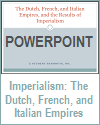 |
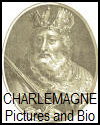 |
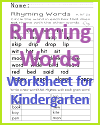 |
 |
|---|
| www.studenthandouts.com > World History > Industrial Revolution > Industrial Revolution Outlines & PPTs |






